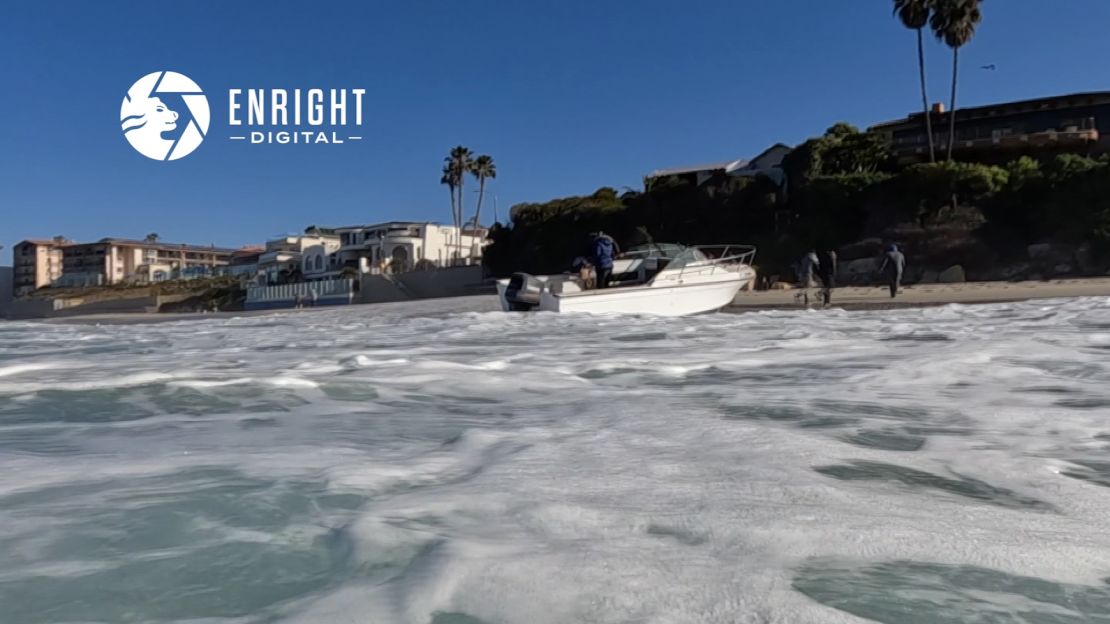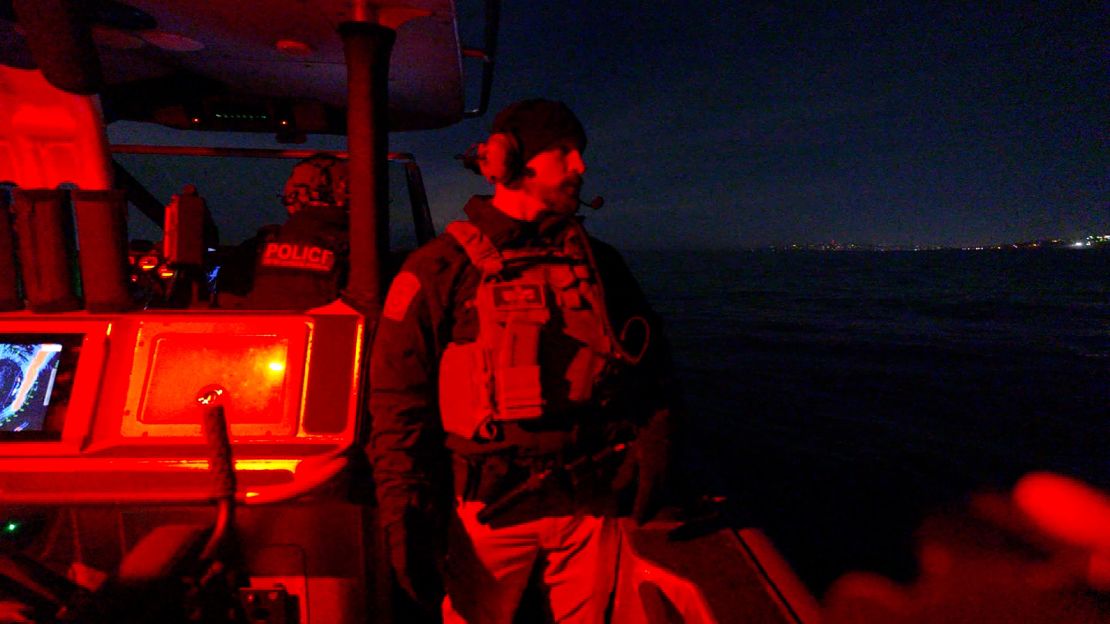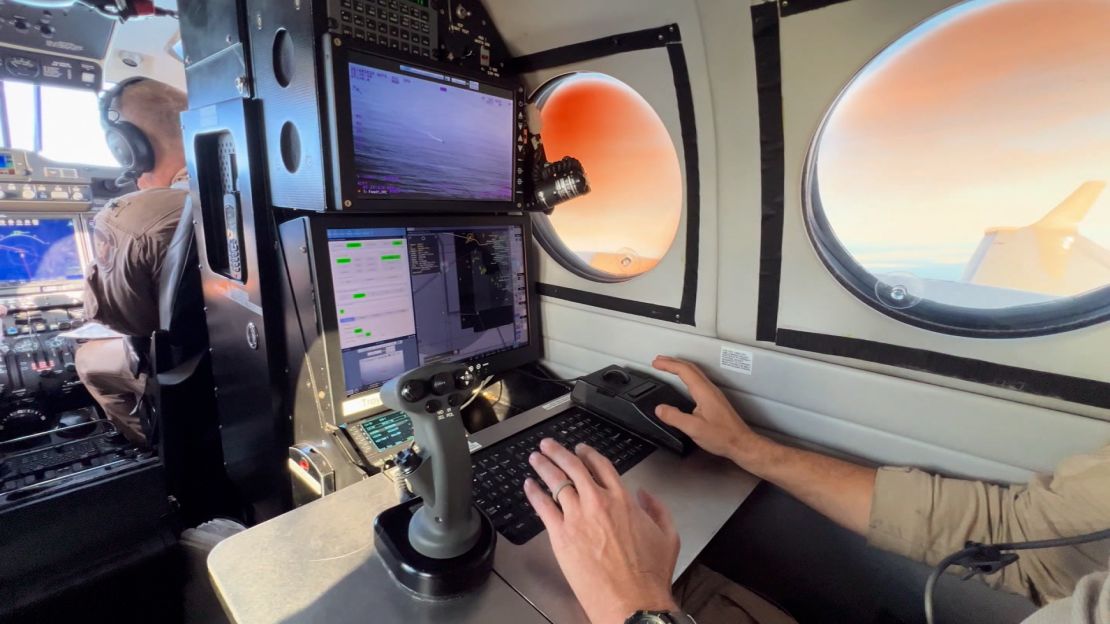The roar of a motor ripped Jack Enright’s attention away from the waves he was videoing under a cloudless blue sky. He yanked his camera out of the ocean to refocus it on whatever was speeding towards him.
“I thought it was just a fishing boat … but then I saw it flooring it towards the shoreline, and it looked like it was literally coming directly at me,” Enright told CNN. “You could hear it flying up the beach and hitting the sand.”
And then, just before 10 a.m. last Tuesday, he recorded as several people emerged from the craft, jumped over its side and sprinted toward the luxury beachside homes in La Jolla, north of San Diego, California.
“It looks like they were kind of hiding underneath the deck of the boat, maybe to be more stealth … I’m not sure exactly,” said Enright, a videographer who has lived his whole life in Southern California and is often out in the surf getting pictures. “I counted eight to 10 (of them).”
Enright later learned that, based on past incidents, the people he saw were likely undocumented migrants. They would be part of a rising trend in illegal Pacific Ocean crossings from Mexico that now sees boats believed to be carrying migrants beaching on the shores around San Diego nearly every day, according to Customs and Border Protection officials.

The number of incidents authorities have responded to have jumped threefold over the last five years, CBP said.
“They’re just a lot of them coming so we’re constantly busy,” said Kurt Nagel, an agent with CBP’s Air and Marine Operations. And while daytime arrivals like the one Enright saw are not unusual, Nagel added, “They mostly cross at night.”
So, hours before each sunrise, Air and Marine Operations agents deploy on high-speed boats to cruise the Pacific Ocean.
CNN had a rare chance to accompany them for a recent overnight patrol and before even stepping onto their vessel, the radio chatter signaled it’d be a busy night. Radar had picked up two jet skis that just crossed the Maritime Boundary Line, the ocean demarcation between the US and Mexico, and were heading towards San Diego.
As the crews hustled to their stations and put to sea, agents tracked the jet skis.
Out on the ocean, the intel suggested at least one jet ski was heading straight towards a patrol boat. The agents cut their engines and killed the lights, bobbing in silence in the moonlit waves of the vast Pacific.
They wore night vision goggles to scan the ocean and said sometimes a whiff of Mexican fuel can suggest a smuggler’s craft is close.
The agents track the jet skis but, unlike with boats, they are careful not to pursue them too aggressively “because it’s really dangerous,” Nagel said.

“We don’t want to risk the lives of the passengers – if (the smugglers) think they’re going to get caught they’ll kick (the migrants) off into the surf,” he said. “(The migrants) are putting their lives in the hands of a smuggler that could care less if they live or die.”
On this night, the blip on the radar dropped off after a few minutes. The jet ski and its driver were gone, but Border Patrol officers on land detained two people who were dropped off at the shoreline.
Unlike the southern land border, where families often cross and eagerly rush towards Border Patrol agents to start their asylum processing claims, out here the migrants and the smugglers bringing them desperately try to avoid getting caught.
Nagel said some of them are innocent families whom “smugglers have convinced that this is a safe and easy passage, but then you have the criminal elements that are coming across as well.”
He says some carry criminal records or are tied to gangs. Others attempt to smuggle narcotics along with migrants.
“We usually find a few felons on every boat,” Nagel said.
Air and Marine Operations boats pair with a fleet of helicopters and small planes that patrol from above, equipped with powerful cameras with infrared technology and capable of zooming in to see how many people are on board. They also share a radio frequency with the US Coast Guard, who help locate and track the incoming vessels.

The possible routes are countless, with variations on where the boats land and how many people are on board. In the past week, officials have recorded at least three incidents of boats running ashore carrying anywhere from a few migrants to a couple of dozen.
Coast Guard members often become first responders when people end up in the water needing rescue.
There are even people who try to swim from the beaches of Tijuana, Mexico, around the border wall that extends into the ocean, to Imperial Beach in San Diego.
“They often do it at night and under fog, and sadly – it’s tragic – some of them don’t always make it,” said USCG Captain Jim Spitler.
Even for the boats that do get within sight of shore unimpeded, the danger is not over. The surf can prove lethal. CBP reported 13 deaths connected with smuggling incidents in the southwestern coastal area in 2023, more than the two prior years combined.
“They don’t fully understand the perils these smugglers are putting them in,” Air and Marine Operations Director Brandon Tucker said of migrants on the boats. “It’s the callous nature … and they just don’t care about human life.”





